
Greetings!
I already had a review of the younger Seek Thermal Compact model, which works as a prefix to the smartphone, this time I got the standalone Seek Thermal SHOT thermal imager with a display, a visible range camera, and a Wi-Fi module. The resolution of the thermal matrix is 206 x 156 pixels. The thermal imager is useful for monitoring the temperature difference and timely detection of problem areas.
In the comments, they asked about the cost : with the HSHOT code (10% discount on the entire Seek Thermal line), the Shot price is 44,910 rubles.

Links to the SEEK THERMAL Series thermal imagers:
Characteristics:
Brand Name: Seek Thermal
Model: SHOT
Microbolometer Resolution: 206 x 156 pixels
Resolution of the optical matrix: 640x480
Viewing Angle (FOV): 36 degrees
Refresh Rate: 9 Hz
Display: 3.5 "
Interfaces: USB-C, WiFi
Functions: Flashlight, SeekFusion, Wi-Fi Streaming, Built-in Memory
Protection against dust and moisture: IP54
Application: Seek View

There are a lot of scenarios - from a simple inspection of the apartment and going around the house outside to finding faulty radio elements, checking electrical equipment, and even for hunting and security. The advantages of an all-in-one combine, that is, in a thermal imager in a protected case (IP54) with a display, built-in functions for analysis, and an additional camera of the visible range, are obvious, for example, you do not need to have a smartphone with you specially for connecting to a thermal imager-set-top box as with the compact series.

The Seek Thermal Shot does not require a smartphone connection to work - it is a standalone device. The display resolution is convenient for work. Using the touch screen, it’s convenient to control the device by putting markers to determine the temperature, highlighting the studied areas and so on. Screen resolution is 640 x 480 pixels. The device case has rubber inserts and is generally protected from dust and moisture according to the IP54 standard. Compared with Seek Thermal Shot PRO , the latter has a higher resolution thermal matrix (320 x 240 pixels).

The kit includes a lanyard and cable for synchronization and charging (USB-C).

There is also a detailed instruction in Russian on all functions and terms of the device.

Appearance of the thermal imager Seek Thermal Shot.

Below is a USB-C connector (under the rubber plug), thread for mounting on a photo tripod (1/4 ").

On the top panel (closer to the center) is the power on / off button and on the right is the shooting button.

Unlike the Flir C2 / C3 models, the Seek Thermal Shot / Shot Pro line has a larger display (3 inches versus 3.5) and the resolution of the visible range matrix is 640x480 for Shot versus 320x240 for Flir. A lens with a special IR lens for a microbolometer is located on the body, a window for the matrix of the visible range is just below. On the left is the backlight. The battery life for a Seek Shot is about 4 hours. Such a capacious battery allows for a long time to work at low temperatures (in cold weather).

For convenience or for long-term observation of the object, it makes sense to install a thermal imager on a tripod. For this, a standard thread on the body (1/4 ") is provided. There is also remote access via Wi-Fi.

Under the rubber plug is a USB-C connector for charging and synchronizing with a computer.

The body is rubberized, not slippery, the inserts protect against small impacts. A hole for the lanyard is provided below.

The backlight is turned on from the menu, you can use it as a flashlight.

Hold the power button, turn on the device.

One of the saved pictures is in the photo - during the work, the pictures are saved in the internal memory and are available for further analysis, including on the device itself.

One of the first shots is checking the heating of the lightbox backlight lamps. Seek Thermal Shot allows you to analyze images directly on the device. You can select a palette, select a marker (point) or image area and estimate the temperature. The lamps are made of aluminum profile and give heat well to the surrounding area. Average temperature during continuous operation: 40 ... 50 ° C.

For quick analysis, it is convenient to use one of the contrasting color schemes (palettes). Several palettes are available: White, Black, Tyrian, Spectra, Iron, Prism, Amber and Hi (contrast).

One of the killer functions of this model of a thermal imager is the ability to combine visible and thermal images for detailed analysis with the addition of temperature markers.

Imager files: Thermogram plus combined image.
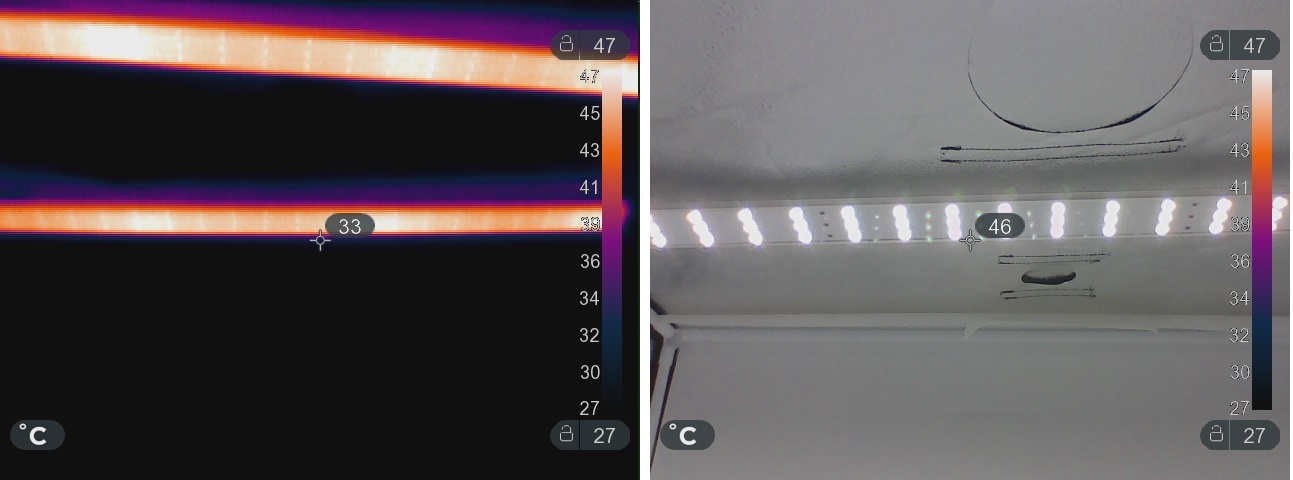
The thermal imager is equipped with a Wi-Fi module and is able to transmit a picture to a smartphone or tablet (Wi-Fi Streaming) using the Seekview application .

We activate the Wi-Fi access point (password and login are configured).

We are connected to the created access point.

The Shot thermal imager allows you to accurately measure surface temperature in the range from -40 ° C to 330 ° C, including remotely (via Wi-Fi), plus analysis tools are available (palettes, markers, area and so on).

The mere fact that it is possible to save the image for further analysis gives the SHOT line a huge advantage. You can take a series of shots for comparison and quiet analysis.

An example of an image from memory - all temperature labels are saved, plus a post-analysis is available.

An example of overlaying a visible image and a temperature image.

I immediately turn to specific examples - a thermal inspection of a multi-storey residential building was conducted to find heat leaks.
The average panel house was chosen. You can clearly see the problematic joints of panels with unplated seams. The people as they can, or with the services of housing and communal services insulate (red seams - this is insulation with polyurethane foam).

Naturally, everything “glows” with warmth outward. Precious heat can leak out through such seams, you need to wind the heating meter, mold may form in these places.

An example of external insulation.
The tenants used the services of insulation - they covered the cracks on the outside and sheathed polystyrene sheets.

The temperature difference is visible in the picture - the insulated place radiates less heat than the standard panel.

An interesting point was discovered in the passage-arch in the house.

Joints practically have no thermal insulation, in such cases adjacent walls freeze in the apartment, mold appears, room temperature is kept at +15 degrees and so on. In such cases, it is necessary to insulate thoroughly, both outside and inside simultaneously.

Now we will examine the entrance from the inside.
In the picture, the result of the overlay of the visible picture and thermogram.

There were preliminary complaints - "the entrance freezes, it is very cold." At the same time, the heating worked (the relevant services believed the radiators in the entrance).
Bright vertical tube in the picture - access heating (+31 degrees). Near the heating return (colder).

One of the obvious reasons for the low temperature is the lack of intelligible thermal insulation of the gas inlet.

This hole is straight to the street at the second floor level, into which cold (frosty) air blows.

Specifically, the values were measured: temperature in the entrance +12, in the region of the "leak" minus 4 degrees.

That is, it’s cold in the entrance because of obvious things. And the heating works as it should - checked!

Another interesting point is the open dormer windows in the basement. Favorite place for stray cats.

I continue thermal inspection. This time - a heating main (heating input in the area of a residential building). Specifically, the picture shows local damage to the insulation, as a result, the boiler room “heats” the street, and in the house itself it is colder than it could be ...

Then they asked me to inspect a private house.
Boiler heating. The hottest part is the chimney.

The boiler itself is heating.

Pipes, heating pump. On the left you can see the radiator tubes of the refrigerator (vertical tubes).

An example of a well-functioning heating radiator.

Heating pipe.

But I found a problematic radiator - inside the dirt, it interferes with the normal heat transfer and water flow. There were complaints of uneven heating.
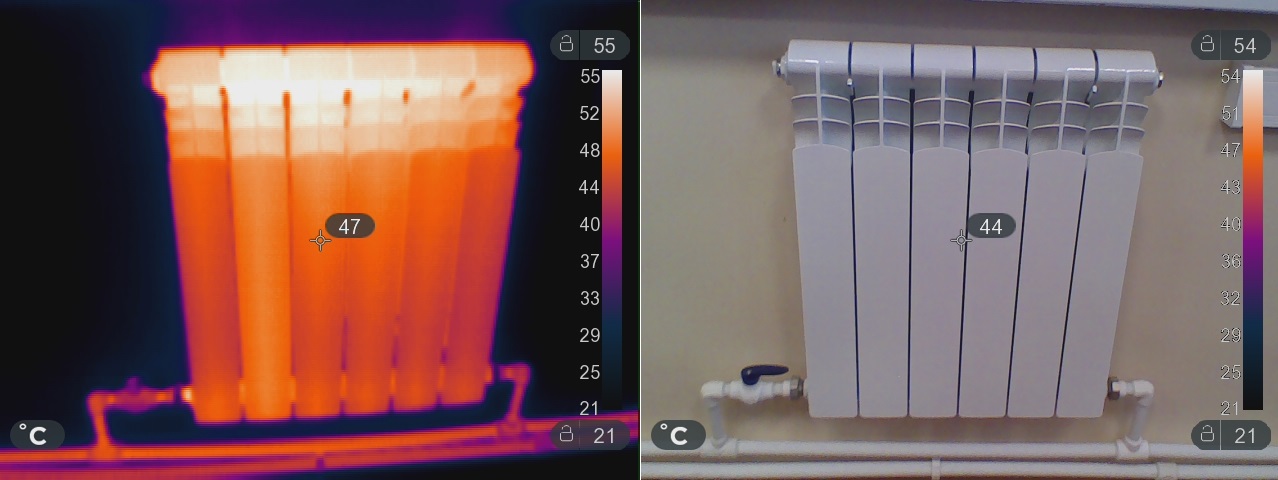
By the way, software allows you to evaluate the temperature range. To do this, select the appropriate icon in the menu and select the area on the screen. The minimum and maximum values are displayed, and the average temperature in the selected block is also calculated.

And there is also the opportunity to fix the temperature limits - this allows you to select objects with a minimum temperature difference.

An example of such a photograph is a thermal footprint. The “fix” temperature is set at 10 degrees (from 17 to 28 degrees).

I continue the thermal inspection of the house.
In words, the client said that despite the good heating (an imported boiler, good radiators, a circulation pump, plus plastic windows and double-glazed windows), the house is cool. This became especially noticeable after the onset of cold weather.
What can I say - the house is "hot". During the construction of the house, they “screwed up” or “saved” - they incorrectly chose the type and amount of thermal insulation material. Frame house, inside insulation, outside OSB. The surface temperature reaches +10 degrees, with frost on the street minus 10 ... 12 degrees. Alas, the repair will result in a good amount, since you will have to redo the finished one.

Neighboring frame house.
Here the situation is slightly better, the meaning is the same.

Another cottage. Specifically examined the windows.
It was interesting how the skylight was implemented.
The picture is quite normal isolation.

Inside shot - the glass is cold, but, in general, no leaks were noticed.

But between the roof levels the builders forgot to insulate the joint.
In the picture, +9.

The average temperature is +4.

External cladding - leakage at the seams.

Skewed windows (not adjusted clamp)

Door with broken seal (“Blowing out of door”).

The problem is in the office space. Complaint: "Blowing out of the window." The ceiling near the load-bearing wall freezes, most likely the insulation of the joints is broken. Temperature + 16 ° at average + 26 ° in the room. In severe frosts it will freeze.

Rear window defroster operation in a car - you can check and repair faulty heating threads.

And a similar picture for heating the seat.

In general, in a car, you can check the chassis (worn parts, parts without lubrication - warm), the engine itself (heat transfer, etc.).

Just interesting photos that I collected during the test.
Water at subzero temperature.


A few shots of people. Pay attention to the different heat transfer of different parts of the body - this indicates the quality of winter clothes.


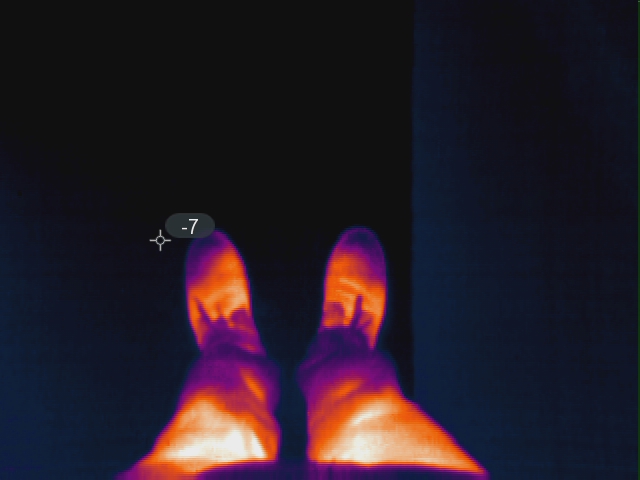

Sewer manhole, warm.
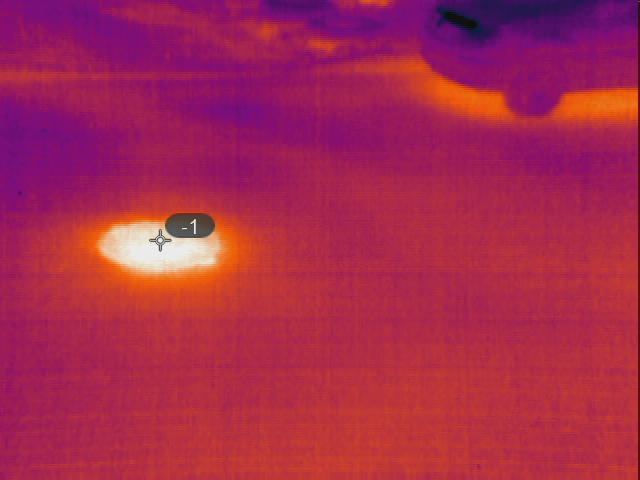
Installation of industrial conditioning.
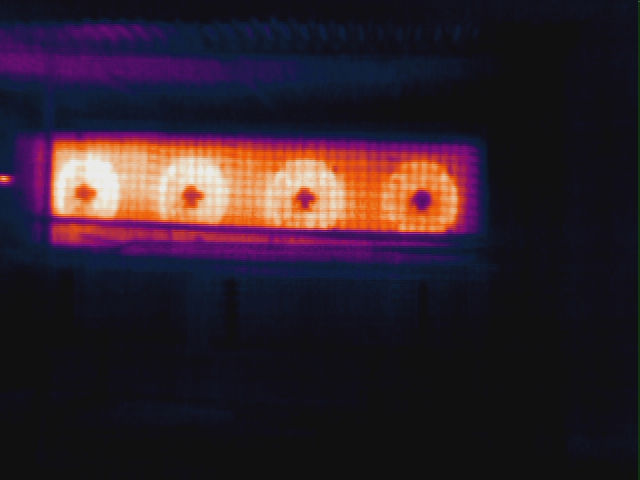
The other day I checked the operation of a 3D printer.

It is convenient to calibrate the temperature of the table and nozzle.

At the end of the article, I note that the cost of even the most expensive model (Seek ThermalShot Pro or similar) is a scanty cost when compared with possible miscalculations when building a house, installing thermal insulation or repairing the consequences. The thermal imager will help to timely identify a malfunction and provide for local repair. Thermal inspection is a reasonable action that will save time and nerves when
examination of a residential building or apartment.

Thank you for your attention, I hope you can use the thermal imager too.